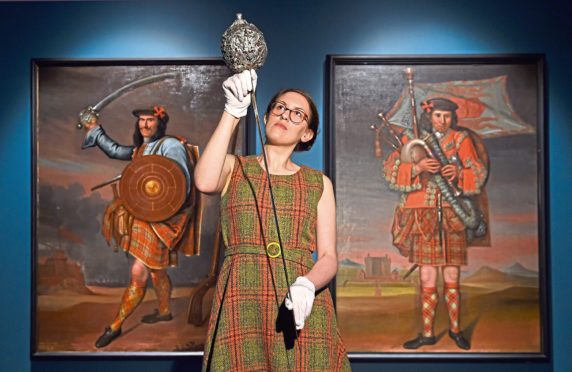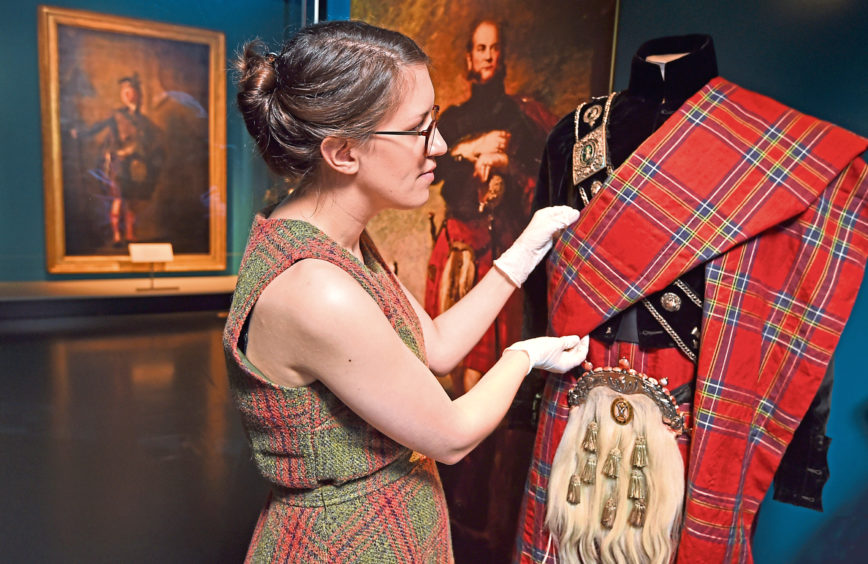Thousands of visitors have been flocking to the National Museum of Scotland in Edinburgh to see a major exhibition which lifts the lid on an intriguing story – how Scotland came to be seen by the rest of the world as a country that’s wild, majestic and romantic.
Take a walk through the exhibition, and by the end of it, you’ll have learned the fascinating story of how tartan, bagpipes and rugged landscapes became established as enduring, internationally recognised symbols of Scottish identity, and how Scotland became established in the popular imagination as a land of wilderness, heroism and history.
Wild and Majestic: Romantic Visions of Scotland covers the period from the final defeat of the Jacobites at the Battle of Culloden in 1746 to the death of Queen Victoria in 1901.
It explores the efforts made to preserve and revive Highland traditions in the wake of post-Jacobite persecution, depopulation and rapid socio-economic change and shows how Scotland’s relationship with the European Romantic movement transformed external perceptions of the Highlands and played a vital part in the birth of tourism in Scotland.
These developments would, in turn, influence the relationship between the Hanoverian royal family and Scotland, particularly George IV and, later, Queen Victoria, who created an estate in Balmoral.
More than 300 objects are on display, items drawn from the collections of National Museums Scotland and 38 lenders across the UK.
Every one has a story to tell and is linked to some rather famous names including Queen Victoria and Prince Albert; King George IV; Sir Walter Scott; Robert Burns; JMW Turner; Henry Raeburn; Felix Mendelssohn; William and Dorothy Wordsworth; Ludwig Van Beethoven and Lord Byron, whose 1807 poem Lachin y Gair (Lochnagar) is quoted in the exhibition’s title.
Prominent Highlanders featured include the Ossian author-translator James Macpherson, the soldier-historian David Stewart of Garth, the clan chief Mac Mhic Alasdair (Alasdair Macdonnel of Glengarry), and the folklorists Alasdair Gilleasbaig MacGilleMhìcheil (Alexander Carmichael) and Iain Òg Ìle (John Campbell of Islay).
Exhibition curator, Dr Patrick Watt, said: “This is a contested, complex history and also a fascinating one.
“There are competing claims, still, over the extent to which those symbols of Scotland we see today are romantic inventions, or authentic expressions of an ancient cultural identity.
“Using material evidence, we will examine the origins and development of the dress, music and art which made up the Highland image.
“We will show how cultural traditions were preserved, idealised and reshaped to suit contemporary tastes against a background of political agendas and economic and social change.”
Following the Battle of Culloden, there were reprisals across the Highlands.
The power of the clans was dismantled, male civilians were banned from wearing Highland dress and Gaelic culture was disparaged. The ban on wearing tartan did not apply to men who enlisted in the newly raised Highland Regiments of the British Army and the heroic image of the tartan-clad Highland soldier went on to become an icon of the military power of the British Empire, while the ideal of the heroic Highland warrior would recur throughout the 19th Century.
The exhibition features lots of rich displays reflecting the colour and flamboyance of the Highland image.
Visitors will also learn about key developments such as the Ossian controversy, the over-turning of the ban on Highland dress, the pageantry around King George IV’s visit to Edinburgh in 1822, the Highland tourism boom, and the creation of a romantic idyll for Queen Victoria at Balmoral.
Throughout, the influence of Gaelic language and culture is reflected via objects, text and film.
Wild and Majestic: Romantic Visions of Scotland is on display at the National Museum of Scotland, Chambers Street, Edinburgh until November 10 2019. Visit
nms.ac.uk/wildandmajestic

